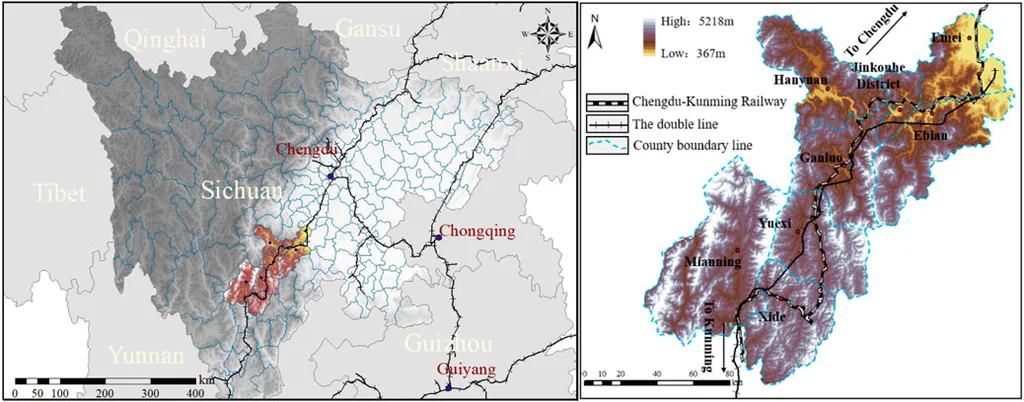In the heart of Chengdu, China, researchers at the State Key Laboratory of Geohazard Prevention and Geoenvironment Protection, Chengdu University of Technology, are unraveling the complex behaviors of dense solid-liquid two-phase granular flows, a phenomenon central to geological disasters like debris flows and shallow landslides. Led by Dr. YANG Xiaoxia, the team’s groundbreaking experiments are not just academic exercises; they hold significant implications for the energy sector, particularly in managing and mitigating risks associated with geological hazards in energy infrastructure projects.
The team’s innovative approach involves using a custom-designed rheometer, capable of applying normal stresses ranging from 5 kPa to 20 kPa and shear strain rates from 0.1 s⁻¹ to 360 s⁻¹. This allows them to simulate a wide range of real-world conditions that previous models have not adequately addressed. “We’re bridging the gap between ideal laboratory conditions and the complex, high-stress environments encountered in actual geological disasters,” explains Dr. YANG.
The experiments utilize zirconia beads and quartz sand as granular materials, and water and silicone fluid as interstitial fluids. The results are revealing. High-viscosity interstitial fluids, for instance, significantly enhance the friction coefficient of granular flows, particularly under high-speed shear. This finding is crucial for understanding and predicting the behavior of materials in energy sector applications, such as in the transportation and storage of granular materials like coal, sand, and other minerals.
The research also sheds light on the suitability of different constitutive models. The team found that the Bagnold constitutive effectively characterizes flow behavior when the viscosity of the dry granular material or interstitial fluid is low. However, for high-viscosity interstitial fluids, the Muir Wood constitutive proves more suitable. This distinction is vital for selecting appropriate models in practical applications, ensuring accurate predictions and effective risk management.
Dr. YANG highlights the practical implications: “Our findings can help in designing more robust infrastructure and developing better strategies for managing geological hazards in energy projects. By understanding the rheological behavior of these materials, we can mitigate risks and enhance safety.”
The team’s work, published in the journal ‘Yantu gongcheng xuebao’ (translated to English as ‘Rock and Soil Mechanics’), proposes specific dimensionless boundary parameters to delineate viscous and inertial flow regimes. This advancement allows for a more precise description of the macroscopic dynamic processes of geological hazards, paving the way for more accurate modeling and simulation in the energy sector.
As the energy sector continues to expand into challenging terrains, the insights gained from this research become increasingly valuable. By providing a clearer understanding of the rheological behaviors of dense solid-liquid two-phase granular flows, Dr. YANG and her team are contributing to the development of safer, more efficient energy infrastructure. Their work underscores the importance of interdisciplinary research in addressing real-world challenges, offering a beacon of progress in the quest for sustainable and secure energy solutions.

